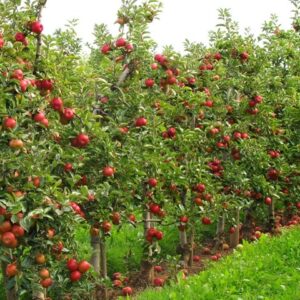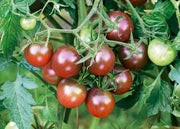Characteristics of Arbequina Olive Trees Bring a taste of the Mediterranean to your home! Delicious both for eating at the table and pressing for oil, the Arbequina olive originates from Catalonia, Spain, and is one of the most popular olive varietals grown in California’s olive industry today. This fruit tree grows well in containers indoors. Outdoors, it may be planted in pots and brought inside for the winter, or it may be planted in the ground in temperate climates. Plant your Arbequina olive as an accent to your patio! The willowy branches grow beautiful gray-green leaves, producing olives that start off green and mature into a lovely black. The olives hang well on the tree and ripen at different intervals, allowing multiple small batch harvests. Traditionally, the green foliage of olive trees was formed into victory crowns at the ancient Olympics and currently symbolize peace and friendship. Branches are used today for indoor home decorating. The Olives Arbequina olives are small black olives that are beloved for their light, fruity flavor. The olives must be cured before eating at the table and should be processed immediately after harvesting. There is a natural buttery note to the oil that makes it a favorite extra virgin olive oil for many chefs and home cooks. Fresh olives can be pressed at home in small batches to produce your own high-quality extra virgin olive oil. Arbequina olives are high in monounsaturated fat and vitamin E, and the oil is also an excellent source of monounsaturated fat. Growing Arbequina Olive Trees Grown in the ground, the tree can reach up to 15 feet tall. In a garden pot, the tree’s height will be reduced by the size of the pot. Olive trees can live hundreds of years. The Arbequina olive is self-pollinating. These low-maintenance olive trees need full sun and well-drained soil. The root system is prone to rotting, so it is especially important that garden pots should have plenty of drainage holes. The Arbequina olive is drought tolerant, pest resistant, and heat resistant. The tree should produce fruit within a few years of planting. Harvesting starts in November. Characteristics Bloom Color White, Yellow Fruit Color Black Fruit Size Small – Medium Pollination Self-Pollinating Ripens/Harvest Late November Shade/Sun Full Sun Soil Composition Loamy Soil Moisture Well Drained – Average Moistness Soil pH Level 7.0 – 8.0 Texture Firm Years to Bear 2 – 3 Zone Range 2 – 9 Size & Spacing Mature Size When your tree matures, it will be approximately 8 – 10′ tall x 8 – 10′ wide. Recommended Spacing We recommend spacing these trees 8 – 10′ apart to ensure room for growth. Zone Compatibility This Variety’s Zone Range 2 – 9 Outdoors: 7 – 9 My Hardiness Zone ? Zip Code The USDA hardiness zones offer a guide to varieties that will grow well in certain climates. Each zone corresponds to the minimum winter temperatures experienced in a given area. Make sure that your hardiness zone lies within the zone compatibility range of this variety before ordering. This item can be grown in colder climates if it’s planted in a container and brought indoors during the winter months. If you’re planting it outdoors in the ground, we recommend being within the outdoor zone range. Pollination This variety is self pollinating. In many cases, you may still want to plant pollinating partners to increase the size of your crops, but with self-pollinating varieties doing so is optional. You’ll get fruit with only one plant!
Edible Gardening, Nursery, Specialty Fruits, Specialty Fruits




Reviews
There are no reviews yet.